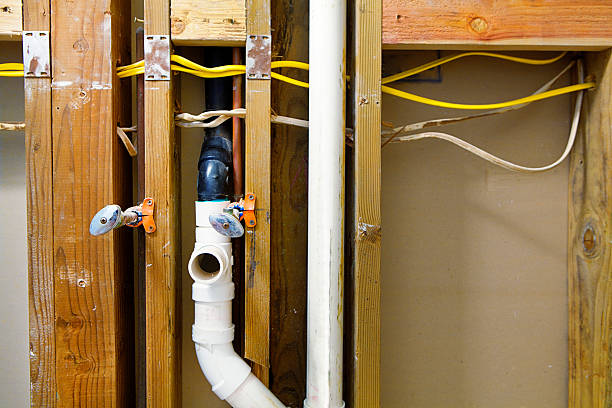Rough-in plumbing refers to the initial installation of plumbing lines, which takes place before any fixtures are installed. It involves positioning and connecting the plumbing system’s pipes, vents, and other components. The term “rough-in” is used because the plumbing work is not yet finished, and the plumbing fixtures are yet to be installed.
During the rough-in plumbing stage of construction, the plumber will install the pipes and fixtures in the right positions to ensure everything works correctly. This aspect of the construction process is crucial because errors made during installation could lead to significant problems, such as leaks, clogs, or malfunctioning fixtures.
The rough-in plumbing process is essential for ensuring that the plumbing system is reliable, efficient, and functions correctly. The plumber will typically work from a set of plans provided by the builder or architect, which detail the location and specifications of the plumbing system. From there, the plumber will determine the best routes to run the pipes, the size of the pipes, and the type of fixtures to install.
One of the most critical aspects of rough-in plumbing is ensuring that the pipes are sized correctly. Pipes that are too small can lead to low water pressure, while pipes that are too large can lead to wasted water and higher energy costs. The plumber will also ensure that the pipes are installed at the right angle to allow for proper drainage.
Another crucial aspect of rough-in plumbing is venting. Venting is a critical component of the plumbing system that prevents sewer gases from entering the home and allows for proper drainage. The plumber will install vent pipes that run vertically from the plumbing system to the roof of the home. These vent pipes are typically installed before the roof is installed to ensure that they are positioned correctly.
The rough-in plumbing process also involves installing valves and shut-offs. These devices are essential for controlling the flow of water throughout the plumbing system. The plumber will install shut-off valves at strategic points throughout the system, such as under sinks and toilets. These valves allow for easy access in the event of a plumbing emergency, such as a leak or burst pipe.
The rough-in plumbing process also includes installing drain lines and waste pipes. These pipes are responsible for carrying wastewater away from the home and into the sewer or septic system. The plumber will ensure these pipes are positioned correctly and sloped at the right angle to ensure proper drainage.
In addition to installing pipes and fixtures, the plumber will also install other plumbing system components, such as water heaters, sump pumps, and water softeners. These devices are essential for ensuring the plumbing system functions correctly and provides clean, safe water to the home.
Overall, the rough-in plumbing process is critical to any construction project. It involves installing the plumbing system correctly to ensure it functions reliably and efficiently. A well-installed plumbing system will provide years of trouble-free service and avoid costly repairs or replacements down the line. Therefore, it is essential to hire a qualified plumber with experience in rough-in plumbing to ensure that the job is done right.

